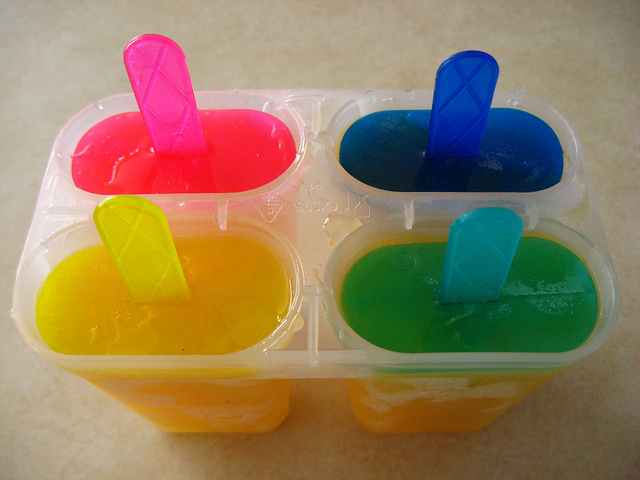Why Store-Bought Popsicles Drip Less
Just in time for another scorching July day, the history of the modern popsicle - and why the store-bought ones are less drippy than the DIY kind
Just in time for another scorching July day, Gizmodo tells the tale of the modern popsicle—and why the store-bought ones are less drippy than the DIY kind.
It begins in 1905 with Frank Epperson, an 11-year-old San Franciscan, who happened to leave a cup of water and powdered soda he’d been stirring with a stick outside one particularly cold night. Epperson woke up in the morning to find a sweet, frozen ice pop on a stick, an invention he named after himself—the Epsicle. He converted the neighborhood kids into Epsicle fans, and later, he treated his own children to the sugary, frozen inventions:
And what did Epperson’s children ask for when they wanted one of their father’s frozen treats? A Pop’s ‘sicle, of course. The name stuck.
But how did we get from a frozen block of powdered soda to the delicious plethora of drip-resistent colors and flavors touted by ice cream trucks across the country today?
Although Epperson’s design was a good one, stick-born frozen treats have come a long way. Better manufacturing techniques now produce pops with a more consistent flavor, and food science has given them a drip resistant structure.
Modern manufacturing techniques make sure freezing is homogenous throughout the pop, keeping the sugar-water ratio in place by a stable ice matrix. Other ingredients, like xanthan gum and locust bean, thicken the liquid.
But these so-called stabilizers come in handy when we’re eating them as well. On a really hot day, the sun does everything in its power to knock your frozen treat off its stick, one drip at a time. But stabilizers slow down the melt by preventing the ice from flowing. They’re basically there to tell the popsicle to cool it.
That’s tasty science at its best, though don’t let that revelation discourage you from one of summer’s great pleasures: making homemade popsicles à la Epsicle.
More from Smithsonian.com:
/https://tf-cmsv2-smithsonianmag-media.s3.amazonaws.com/accounts/headshot/Rachel-Nuwer-240.jpg)

/https://tf-cmsv2-smithsonianmag-media.s3.amazonaws.com/accounts/headshot/Rachel-Nuwer-240.jpg)